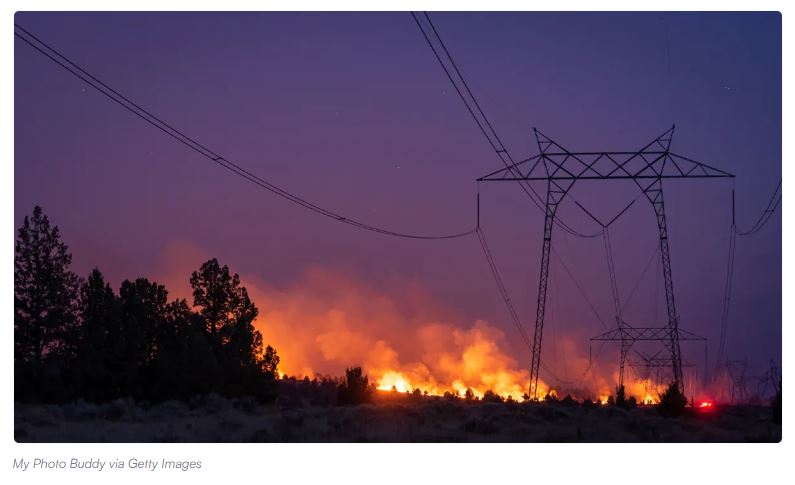Forward-thinking investments and increased power-grid flexibility can prevent wildfiresForward-thinking investments and increased power-grid flexibility can prevent wildfires

Adverse wildfire-prone conditions might become more frequent due to climate change, potentially increasing the incidence of extreme fire events. But this can be prevented by properly optimizing investments and operational decisions for power grids while explicitly considering the relationship between power lines and wildfire ignition under a methodology being developed by researchers at the Lawrence Berkeley National Laboratory with support from the Department of Energy’s Office of Electricity Advanced Grid Modeling program and in partnership with professors from the University of Michigan and the University of Washington.
The proposed methodology is capable of balancing the costs and benefits of different wildfire mitigation approaches and indicating the optimal portfolio of investments to protect power grids.
In this century, wildfires quickly became one of the most feared extreme weather events and a major challenge to safely operating power grids in different locations within the U.S. and abroad. Wildfire-related damages to transmission and distribution assets exceeded $700 million between 2000 and 2016 in California, which is also where the frequency of small wildfires and the total area burned by large ones have significantly increased over the last two decades.
During windy weather periods with low humidity and high temperatures, power lines passing through areas surrounded by vegetation cause some of the most severe wildfires. In fact, if these areas are large enough, multiple ignitions might occur. Some examples of wildfires triggered by power lines include:
The “Black Saturday fire,” which destroyed more than 400,000 hectares and caused 173 human deaths in Victoria, Australia, in 2009;
The “Bastrop fire,” which resulted in the death of two people and the loss of hundreds of homes, in Texas in 2011;
The “Camp Fire,” which led to the death of 85 people in 2018 and is the deadliest wildfire in the history of California; and
The “Dixie fire,” which burned an area larger than 300,000 hectares in California in 2021.
Indeed, in California, out of the 20 most destructive wildfires observed in the past two decades, at least nine were caused by the interaction between electrical infrastructure and the environment.
To read the complete article, visit Utility Dive.



